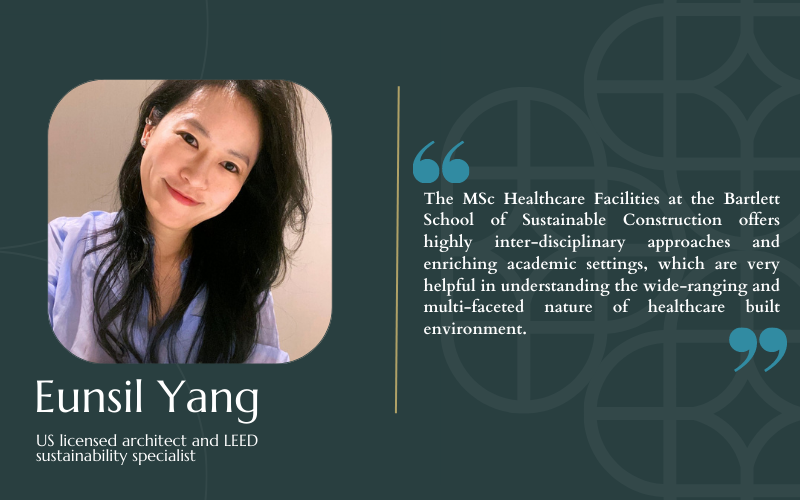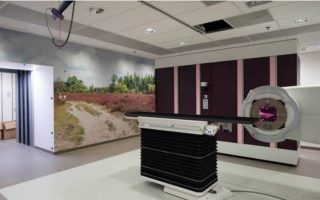MSc Healthcare Facilities alumna, Eunsil Yang, an architect and LEED sustainability specialist discusses her experience within the programme, and how it has contributed to her career development.

Please tell us a little bit about your career/studies to date
I am a US licensed architect and a Leadership in Energy and Environmental Design (LEED) sustainability specialist with 12+ years of professional experience in the built environment sector. Since 2004, I have worked on various architectural development projects in New York, London, and Seoul. Before I enrolled for the MSc Healthcare Facilities, I had previously completed the MSc in International Real Estate and Planning at the Bartlett in 2014 and received the Master of Architecture from the University of Pennsylvania in 2007.
How did you come across MSc Healthcare Facilities and what inspired you to do the course?
I did a little research into the possible options which may further my knowledge in both healthcare and built environment systems. BSSC’s MSc Healthcare Facilities was the only programme that allowed me to do so. As an experienced architect, I gained valuable business insight into the built environment with the awareness of place-making and real estate value chain, but also, I have long been solidifying a desire for knowledge dissemination regarding the health-promoting environment for public good. When the UK became the country hardest hit by the COVID-19 pandemic, I decided to return to the Bartlett to empower myself for an enhanced role to address healthcare facilities as an essential form of social provision to support our community and vulnerable people within it.
What did you find beneficial during the programme?
Planning and designing healthcare facilities should meet the ever-changing acuity and care needs of medical staff and patients. A big overlap between the healthcare sector and sustainability should be factored into the design and construction of healthcare premises. Furthermore, the real estate value of healthcare premises is closely related to the resource efficiency in managing capital spend on health infrastructure that is considered so vital to secure and resilient societies. In that sense, the MSc Healthcare Facilities at the Bartlett School of Sustainable Construction offers highly inter-disciplinary approaches and enriching academic settings, which are very helpful in understanding the wide-ranging and multi-faceted nature of healthcare built environment.
Would you recommend the course to others, can you tell us why?
I would thoroughly recommend this course for anyone who aspires a career in the healthcare built environment. Dr Evangelia Chrysikou, the programme director, has conducted many invaluable studies on therapeutic environment to identify what directions to head in, especially for vulnerable people. Her sincere commitment and evidence-based approach to this relatively neglected area of research is infused throughout the curriculum so that students can not only acquire a holistic knowledge on healthcare services and facilities, but also can perceive the healthcare built environment from more sustainable and humanitarian point of view.
What advice would you give to someone considering doing the course?
The department's website provides the applicant with the list of key teaching staff and their areas of interest. I recommend applicants reading their publications in advance to know what is academically expected of them.
How has this course contributed to your current role/how does it link to what you would like to do in your future career?
The MSc dissertation allowed me to investigate the implications of immersive technologies on the healthcare built environment. I am now planning to develop those research ideas from Master's to a PhD. I will also set up my own company utilising the knowledge and skills I gained from the programme. Ultimately, I want to help the vulnerable part of our society by developing strategies to reduce health inequities among the population through more sustainable and resilient healthcare built environment.
 Close
Close



 Find out more about the Healthcare Facilities MSc through this programme webinar delivered by Dr Evangelia Chrysikou.
Find out more about the Healthcare Facilities MSc through this programme webinar delivered by Dr Evangelia Chrysikou.